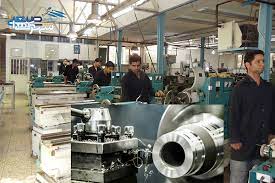
Mold springs, often referred to as ejector pins or ejector sleeves, are an essential component in the world of manufacturing, particularly in plastic injection سنبه برش. These unassuming yet critical devices play a vital role in the production process, ensuring the efficient ejection of molded parts from the mold cavity. Mold springs may be small in size, but they have a significant impact on the quality, efficiency, and overall success of manufacturing operations.
Precision in Ejection:
One of the primary functions of mold springs is to facilitate the ejection of plastic parts from the mold after they have solidified. This process requires precision and consistency, as even minor deviations can lead to defects or inconsistencies in the final product. Mold springs come in various shapes and sizes, allowing manufacturers to tailor their choice to the specific requirements of their molding project. This flexibility ensures that each part is ejected with the right amount of force, minimizing the risk of damage and defects.
Materials Matter:
Mold springs are typically made from high-quality materials like hardened steel or beryllium copper to withstand the demanding conditions of injection molding. The choice of material depends on factors such as the type of resin being used, the expected cycle life of the mold, and the desired surface finish of the molded parts. The material’s durability and resistance to wear are crucial to ensuring the longevity of the mold spring and, by extension, the mold itself.
Enhancing Productivity:
In the fast-paced world of manufacturing, every second counts. Mold springs can significantly impact productivity by reducing cycle times. Their efficient ejection mechanism ensures that molds can be opened and closed quickly, allowing for faster production cycles. This not only increases output but also reduces energy consumption and operational costs.
Maintenance and Longevity:
Proper maintenance of mold springs is essential to ensure their longevity and consistent performance. Regular cleaning, lubrication, and inspection are necessary to prevent wear and tear. Manufacturers should also keep spare mold springs on hand to replace worn or damaged ones promptly, minimizing downtime and production interruptions.


